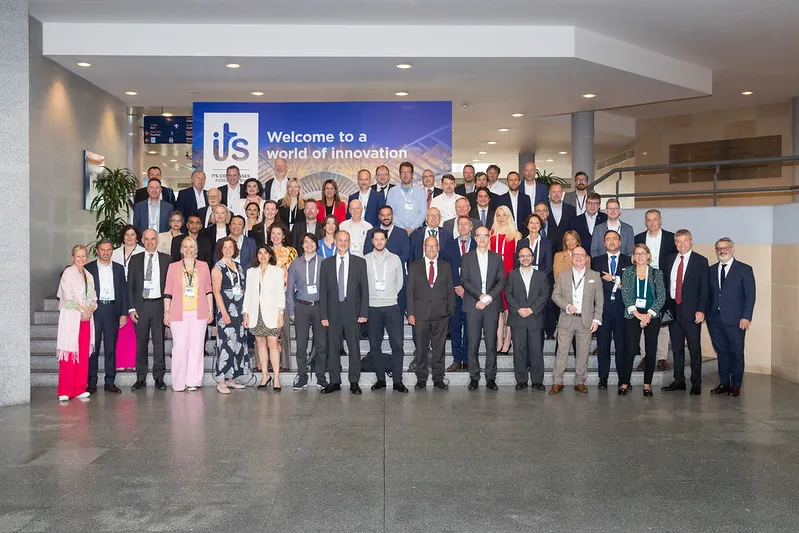Parts of the European Commission’s proposals for the European Fund for Strategic Investments, which foresee the reallocation of US$3.5 billion from the Connecting Europe Facility to provide a part of the US$17 billion for the guarantee fund should be deleted, Transport MEPs suggested in their opinion approved on Tuesday. This target amount should instead be met by gradual budgetary commitments to the guarantee fund to be decided in the frame of the annual budgetary procedure, they add.
Instead of cuttin
April 17, 2015
Read time: 3 mins
Parts of the European Commission’s proposals for the European Fund for Strategic Investments, which foresee the reallocation of US$3.5 billion from the Connecting Europe Facility to provide a part of the US$17 billion for the guarantee fund should be deleted, Transport MEPs suggested in their opinion approved on Tuesday. This target amount should instead be met by gradual budgetary commitments to the guarantee fund to be decided in the frame of the annual budgetary procedure, they add.
Instead of cutting CEF funds to finance EFSI, gradual budgetary commitments, margins and the flexibility instrument available under the MFF 2014-2020 should be used to fund the ‘Juncker Plan’, Transport and Tourism, say committee MEPs. Funds from multiannual programs under heading 1A (e.g. CEF and Horizon2020) should only be used as a last resort, if need for them is demonstrated by actual demand and if these programs prove to be under-committed.
The MEPs made it clear that they are finding additional resources, rather than boycotting the plan. According to Inés Ayala Sender, one of the two co-reporters for the TRAN opinion, the EU infrastructure needs for the period up to 2020 are US$1 trillion. The European Parliament was able to secure US$36 billion for the trans-European networks with the Connecting Europe Facility two years ago. “After today's successful vote, the parliament is strengthening, instead of reducing, the investments in infrastructures with EFSI", she added.
The opinion welcomes the EFSI proposal and reiterates the “irrevocable and unconditional” nature of the EU guarantee, but stresses an urgent need to address the investment deficit. The guarantee fund should not hamper programmes, which already serve the purpose of investment and aim to foster competitiveness and growth, they add.
“CEF should not be sacrificed,” said co-reporter Dominique Riquet, in a debate ahead of the vote. "The Commission keeps telling us these are additional funds but the EFSI proposal rather looks like a substitution. MEPs want a real addition of investment: the Juncker Plan plus Horizon 2020 plus the Connecting Europe Facility," he added.
In addition to providing European added value and being sustainable with a proven economic and societal added value as regards impact on job creation, investment and competitiveness, investment operations backed by EFSI should also support development of new, existing or missing transport infrastructure and new technologies in accordance with the CEF and TEN-T regulations, the TRAN opinion reads.
In the transport sector, project pipeline to be created by the Commission and EIB should take as a basis the priorities and projects identified in TEN-T and CEF regulations.
Instead of cutting CEF funds to finance EFSI, gradual budgetary commitments, margins and the flexibility instrument available under the MFF 2014-2020 should be used to fund the ‘Juncker Plan’, Transport and Tourism, say committee MEPs. Funds from multiannual programs under heading 1A (e.g. CEF and Horizon2020) should only be used as a last resort, if need for them is demonstrated by actual demand and if these programs prove to be under-committed.
The MEPs made it clear that they are finding additional resources, rather than boycotting the plan. According to Inés Ayala Sender, one of the two co-reporters for the TRAN opinion, the EU infrastructure needs for the period up to 2020 are US$1 trillion. The European Parliament was able to secure US$36 billion for the trans-European networks with the Connecting Europe Facility two years ago. “After today's successful vote, the parliament is strengthening, instead of reducing, the investments in infrastructures with EFSI", she added.
The opinion welcomes the EFSI proposal and reiterates the “irrevocable and unconditional” nature of the EU guarantee, but stresses an urgent need to address the investment deficit. The guarantee fund should not hamper programmes, which already serve the purpose of investment and aim to foster competitiveness and growth, they add.
“CEF should not be sacrificed,” said co-reporter Dominique Riquet, in a debate ahead of the vote. "The Commission keeps telling us these are additional funds but the EFSI proposal rather looks like a substitution. MEPs want a real addition of investment: the Juncker Plan plus Horizon 2020 plus the Connecting Europe Facility," he added.
In addition to providing European added value and being sustainable with a proven economic and societal added value as regards impact on job creation, investment and competitiveness, investment operations backed by EFSI should also support development of new, existing or missing transport infrastructure and new technologies in accordance with the CEF and TEN-T regulations, the TRAN opinion reads.
In the transport sector, project pipeline to be created by the Commission and EIB should take as a basis the priorities and projects identified in TEN-T and CEF regulations.








